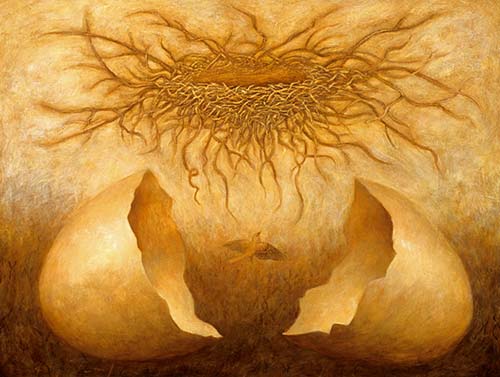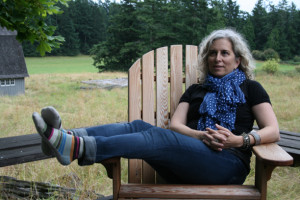For this interview, I turned to my friends from my writing class and groups whom I have been working with for over 10 years. They are the ones who have helped me become the writer that I am. It should be noted that Priscilla Long could easily have kicked me out of class that first quarter when she discovered that I could not write a sentence much less a cogent paragraph. But, she was kind and pushed me hard.
1. How did you arrive at the form for this essay? Did you use it on your first try? What’s it good for? Have you used it for any other pieces? Are there disadvantages to this form? (Questions from Priscilla Long, author of the Writer’s Portable Mentor and many many other works including Genome Tomb, her prize winning essay, and her fantastic column in the American Scholar, Science Frictions)
My writing teacher, you, Priscilla Long, have pushed the issue of finding a form that matches the content of what we are working with. In my many attempts to write on serious topics like depression, marriage, environmental destruction, food production, and the slow death of modern (non-orthodox) Judaism, I have not wanted to write a straight essay, one that would push information in one direction, from me to my audience. Instead, I want to engage the reader and hope that he or she will be motivated to take my work in their own direction.
My natural style is the collage or title/theme because it allows me to weave the threads of the personal with the larger world, trivia, science, the present time and place, my culture, the facts as I know them now, and so on. I am an associative thinker. If you want a straight answer from me, ask a yes or no question.
I want the reader to have time to ponder my words and his/her personal experience. So, I find that the titled-theme structure helps to open up a topic and organize disparate threads.
2. Is “hiding” a theme you have explored before? Do you see any connection between writing and recovery? What pushes you to write your words? (Questions from Geri Gale author of some of the most sublime poetry and prose that I’ve ever read.)
Hiding is not usually something that I am interested in. Hiding is passive and I am pathologically active as are many Jews regardless of the generation. Hiding makes me think of Anne Frank and the numerous atrocities committed by hideously damaged and insecure people who take power and use it against those whom they believe have no voice or power to object.
I started losing friends when I was in my late 20’s due to bad luck and odd circumstances. But, when I lost my friend Patti to breast cancer as I was nursing my second son, I became intensely aware of how much breast cancer was out there.
I should also admit that I started writing the piece under the title, Waiting for Breast Cancer. But, the traditional Jew in me became frightened that this might call cancer fourth. Also, I didn’t want to offend anyone.
I am very interested in making the invisible, visible.
3. Are you interested in health issues? Are you writing about other women’s health concerns? Is there an overriding thread throughout your work? (Questions from Susan Knox author of Financial Basics and many terrific essays and stories which often speak softly and, yet, make a huge impression.)
I am interested in health issues and afraid of them. As a Jew, there’s always the risk of becoming preoccupied with health and medicine. (My grandfather punished my father financially for not going to med. school.)
I am also interested in the discussion of healthcare, healthcare reform, how many dollars go into promoting wellness instead of curing illness. How we dole out healthcare? And, what in the long run is the most compassionate and strategic approach to healthcare and the growth of health sciences for the future.

4. As a writer, how do you get from a place of hiding from something difficult to exploring it so thoroughly? (Question from Linda Breneman author of many many fabulous essays, stories, and new forms of work.)
Hiding in my piece is meant to be ironic. I generally dislike secrets and hiding. I think hiding is a kids’ game. Have you ever seen a toddler cover her eyes to play peek-a-boo? The game is if she can’t see you, you can’t see her.
For the most part, I believe that knowing is always better than fearing or guessing. Once I know something, I can act. Sometimes ‘the act’ is just accepting something and then deciding if there’s anything to be done.
When I was studying Patanjali’s Yoga Sutras, an ancient yoga text, my teacher pointed out that sometimes knowing something can scare the shit out of us and take us way off path. Not-knowing can keep us from going into the fear-reaction loop. She cited the case of someone who saw something and misunderstood what it was and prevented panic in the moment. It was a snake and not a rope.
In the end, I fall on the side of wanting ‘to know’, and I try to manage my reactions.
5. How does this essay fit into your collected works? Is there an overarching theme guiding you? How are you guided in your work? Yoga? Meditation? How did you become so fearless in your approach to this material? How much Vitamin D do you take? (Questions from Janet Yoder, author of many works that touch the deep parts of us.)
I take 1000 IU of D3 a day, which is the recommended dose. My first real job was at Fred Huchinson Cancer Research Center working on the 13th International Cancer Congress. As a high school student, I visited kids undergoing cancer treatment and/or kids whose parents or siblings were in treatment. My sister Terrie was an early bone marrow transplant nurses at the Hutch. I grew into the material. I saw kids lose their parents, parents lose their children, siblings lose siblings, husbands and wives lose each other. As a result, I got ‘real’ very quickly. I am a doer, so my response to fear is to do.
I have practiced yoga since I was in my mid-twenties. I got into yoga before it was the ‘it’ thing. I had teachers who were spiritual seekers and others who came to the practice due to injury. Meditation followed shortly after, but I admit to falling off the cushion regularly and for long periods of time. My practices have given me the ability to sit and think and muse for long periods of time. I crave clarity.
My overarching theme is what makes us real. What motivates us to show up in the world? What motivates us to seek truth? What motivates us to do the work at hand? I want to say clearly that I don’t look to suffer, I look to have fun. My sense of humor is my main tool. I am married to a very funny man, and my kids have great senses of humor.
6. What in your personal and family history/ heritage informs your writing? (Question by Wilhemina Condon author of the truly great Walnut & Vine in the current issue of North Dakota Quarterly.)
Hmmmm–Everything I do is influenced by my family and my Jewish heritage/religion/culture/
Many of my characters are Jewish or are married to Jews or are the children of Jews. Many of my characters try to run away from Judaism only to find that it sticks like gum on the bottom of a shoe.
I think writing is one of the key places that I try and work out my Jewish identity in a world that is increasingly more assimilated unless you are an orthodox Jew, which I haven’t been for a very long time.


Stacy, thank you for forwarding your interview to me. I am very impressed with your writing. It has been getting better and better as time goes on by. I am glad to see others commenting on your writing and knowing how well you are doing.
Don’t ‘hide’ this. Pretty damn impressive! Mazal tov.